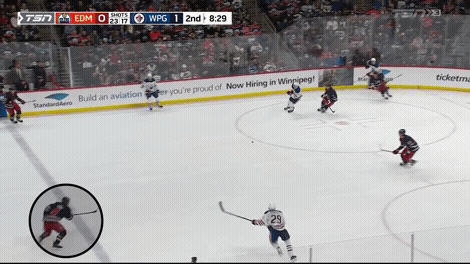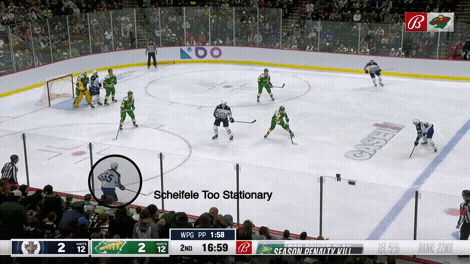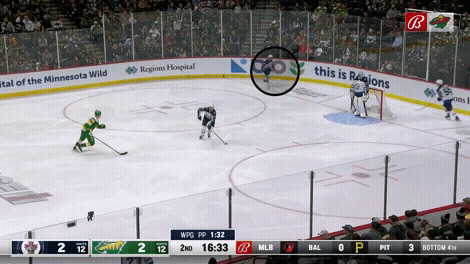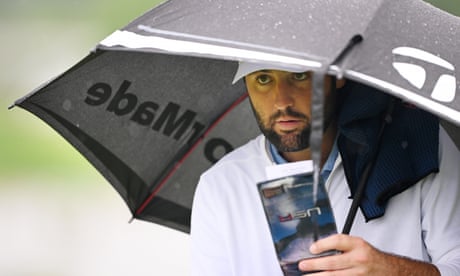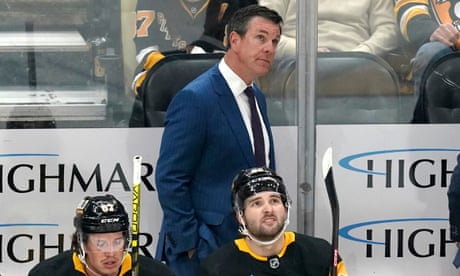
Coming down the regular season stretch, the Winnipeg Jets have played with inconsistency. A 4-5-1 record in their past 10 games, that segment started well enough with a road victory over the New York Rangers, but the next six games ranged from average to poor and all ended in losses. Now Winnipeg has rebounded nicely by winning their past three games, including a hard-fought contest against Los Angeles.
Since March 18, Winnipeg is 22nd in goals per game (2.70) and 22nd in goals-against per game (3.30).
So what do we think about the Jets with the playoffs so close?
It’s no secret that to have success in the Stanley Cup Playoffs you need elite goaltending, positive results from special teams, and detail on and off the puck in all three zones.
If the group is struggling to score they need to be patient, defend with purpose, and out work their opponent. Winning key faceoffs and starting with the puck is also an important element of the game that can’t be overlooked.
With some of these things in mind, I set out to break down what I’m observing from the Jets recently and what it might mean for their playoff outlook.
GOALTENDING
We know the Jets are set up well between the pipes and can get elite goaltending. That alone could end up being the difference in a series.
Connor Hellebuyck has to be the favourite to win the Vezina Trophy this season after last winning it in 2020. He’s 34-19-4, with a 2.41 GAA and .920 save percentage on the season, but it needs to be noted that — by Hellebuyck’s standards — he did struggle a bit over his past 10 starts (2.94, .909).
However, he appears to be back on track again with two straight solid wins against Calgary (31 saves) and Minnesota (25 saves), allowing four goals combined.
Winnipeg arguably will have the best goaltending tandem in the playoffs, and we can’t forget about Laurent Brossoit. With a 13-5-2 record, 2.10 GAA and .925 save percentage this season, the Jets would be confident if they ever had to turn to their backup. Brossoit won six of his eight playoff starts for Vegas last year (including four against the Jets).
DEFENCEMEN
The Jets’ defencemen have a wide range of skill and can play the game a variety of ways.
We all know about Josh Morrissey, who averages over 24 minutes a game and is eighth in scoring among all NHL blueliners with 63 points in 77 games. But Dylan DeMelo is perhaps one of the most underrated defencemen in the entire league. He complements Morrissey with his more reserved and safe approach to the game.
DeMelo takes care of his end before thinking offence. He could also be paired with a more defensive partner in a shutdown role, if desired. If he plays alongside someone like Brenden Dillon, it gives the Jets a pairing that can match up defensively against top-six opponents.
Dillon provides the Jets with a physical presence and doesn’t give up any easy ice to opponents. He gaps up to kill plays effectively, competes in the trenches, and leads the Jets with 222 hits.
Dylan Samberg, Logan Stanley, Nate Schmidt and Colin Miller are interchangeable defencemen who provide varying levels of skill and will. Any one of these players can provide bottom pair minutes.
Winnipeg’s “wild card” defenceman, in my opinion, is Neal Pionk.
Pionk averages 20:50 of ice time per game and he gets it in all situations. He’s quick and fast and never backs down from contact, or from a battle to make or extend a play. And he can provide some secondary level of offence.
However, over the past 20 games Pionk’s detail has fallen off. His decision making and execution hasn’t been as crisp as it was earlier in the season and he’s a minus-5 over this span (and plus-5 on the season overall).
There is some risk/reward to Pionk’s game and I appreciate his compete level. He definitely empties the tank and gives all he has towards generating positive results. But his spatial awareness and composure will be put to the test in the playoffs. I think if he could simplify his game at times, it would lead to more positive results.
Here are a couple examples of what I’m noticing from Pionk recently:
In this first clip, I recognize what Pionk is trying to accomplish: He wants to extend an offensive zone sequence for the Jets. He initially keeps the play alive in the Oilers’ zone, but tracks far too deep and ends up below the goal line. He needed to retreat earlier from this situation. Not every positive play has to end with the puck in the back of your opponent’s net. In this sequence Pionk was matched up against Connor McDavid and Leon Draisaitl and they took advantage.
Pionk needs to pick his spots against top flight playoff opponents.
Conversely, Pionk has the legs to attack off the rush and back opponents off their blue line. He can make plays in open space.
Everyone has to play to their strengths for this defensive group to have success, and most of them have been relatively consistent this season.
Pionk had taken a nice step forward compared to last season until this recent blip. Given the amount of ice time he logs in every situation, he’s a player I’m keeping a close eye on heading into the playoffs.
FORWARDS
The Winnipeg Jets’ forward group has a workman like approach to the game when they are clicking on all cylinders, with a mix of skill and will.
Players like Mark Scheifele, Kyle Connor, Nik Ehlers and Cole Perfetti provide finesse, while Adam Lowry, Mason Appleton and Nino Niederreiter aren’t shy about battling. And having a healthy Gabe Vilardi provides the Jets with yet another scoring option. Vilardi doesn’t play with exceptional speed, but he does have fantastic puck touch and vision in the offensive zone that the team missed when he was out.
Outworking your opponent is a choice and I’m not worried about the Jets’ middle six forwards (Lowry, Appleton, Alex Iafallo, Neiderreiter and Morgan Barron) being able to do that. I trust their work ethic, willingness to mix things up, and check opponents defensively.
What I am concerned about with this forward group, however, is its success in the faceoff circle, which shouldn’t be underestimated in the playoffs. The penalty kill relies on its centre to win them the puck and it’s also imperative to win key faceoffs in the offensive zone when you’re chasing a game.
Sean Monahan has been Winnipeg’s top faceoff-winning centre with a 54 per cent success rate, but after him everyone else is lacking. The Jets as a team are 24th in faceoff winning percentage this season (47.8 per cent).
|
PLAYER |
FO% (minimum 400 draws) |
|
Sean Monahan |
54.05 |
|
Adam Lowry |
49.51 |
|
Mark Scheifele |
48.37 |
|
Vlad Namestnikov |
36.42 |
DETAILS, DETAILS, DETAILS
Like all teams, Winnipeg’s scoring forwards log the most ice time up front and need to be committed at both ends of the ice. On balance, the Jets have been more defensively committed this season compared to years past. The one exception to that might be Kyle Connor, who has a team-worst minus-9. Scheifele, on the other hand, has worked to improve his habits and detail and is a plus-17 this season after being a minus-16 a year ago.
However, there have been some instances in recent games where I have noticed some poor habits creeping into both of their games. Connor needs to keep his feet moving off the puck and track back the entire 200 feet, while Scheifele has to re-focus and be more committed as well.
Here’s an example of what I’ve noticed on occasion.
This clip catches both Scheifele and Connor above the play on defence to start. Schiefele pounces on a puck and attempts to make a play to Connor in the middle of the ice. But when things don’t connect the two forwards fail to make the necessary adjustment and check back the entire length of the ice. Instead, they stop moving their feet momentarily, which allows the Ottawa Senators to attack the Jets’ zone with numbers.
SPECIAL TEAMS
The Jets’ power play has scored only 12.5 per cent of the time in the past 10 games and their penalty-kill has only operated at a success rate of 65.4 per cent.
When on the PK I’d like to see the group jump to pucks quicker and win more battles below the goal line before their opponent has opportunity to gain full possession.
Here’s an example of what I mean.
In this clip, the Calgary Flames work the puck below Winnipeg’s goal line. Pionk is engaged with Nazem Kadri and fails to chip the puck up the wall. Samberg (No. 54 for the Jets), had two choices on the play: anticipate the puck being chipped up the wall and pounce on it for a zone exit, or engage quicker down low to create a turnover. Finally, Lowry stops skating far too early when he’s attempting to front the shot from Calgary’s Mackenzie Weegar.
Meantime, almost every NHL team will have its power play run hot and cold throughout a season. When it’s out of synch, it’s generally due to slow puck movement and poor execution on zone entries.
Here’s an example of the Jets setting up on their power play and not moving the puck quick enough. Scheifele has the puck on the flank and needs to make a quicker decision to move the play along. He has Vilardi at the net front and Morrissey up top as options. He simply needs to move his feet and the puck more effectively.
Scheifele ends up directing the puck on net, but it’s not a quality shot on goal. The Jets end up losing control of the sequence and Minnesota ices the puck.
The second sequence comes from the same power play. Connor leads the zone entry with speed and notice how slow Monahan and Scheifele are supporting him down low in the zone.
The Jets end up being out numbered and the Wild again ice the puck.
CLOSING THOUGHTS
This version of the Winnipeg Jets has a chance to find success in playoffs. The goaltending is in place, they have the lowest GAA of any team on the season, and they have a nice mix of size and skill.
But Winnipeg needs to get back to basics at times. If the penalty kill and power play are struggling it’s never wise to stop moving your feet, or the puck, and limit your physical engagement.
Creating more chaos, and confusion, via relentless compete generally leads to positive results. The Jets are capable of that, but will it all come together in the playoffs? Time will tell.



